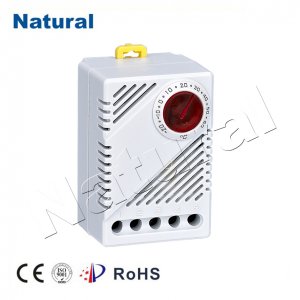Introduction

In modern living, achieving optimal indoor comfort goes beyond mere temperature control. Humidity, often overlooked but equally crucial, plays a significant role in creating a pleasant living environment. This is where the humidity controller thermostat comes into play, providing an innovative solution to maintain the perfect balance of humidity levels for enhanced comfort and well-being. The Significance of Humidity Control Humidity, the amount of moisture present in the air, can greatly influence our comfort, health, and the condition of our surroundings. Inadequate humidity levels can lead to a range of issues, including dry skin, respiratory problems, and even damage to furniture and structures. On the other hand, excessive humidity can foster the growth of mold, dust mites, and bacteria, posing health risks and potential damage to property. Traditional thermostats focus primarily on temperature regulation, often neglecting the impact of humidity. However, the humidity controller thermostat takes a holistic approach, ensuring both temperature and humidity are optimized for a harmonious indoor environment. Functionality and Benefits A humidity controller thermostat combines the functions of a traditional thermostat with advanced humidity sensing and control technology. It actively measures the humidity levels in the air and adjusts the heating, ventilation, and air conditioning (HVAC) system to maintain an ideal range. This dynamic control prevents the air from becoming too dry or overly damp, ensuring a comfortable and healthy indoor space. The benefits of a humidity controller thermostat are numerous: Health and Comfort: Maintaining proper humidity levels can help alleviate respiratory issues, dry skin, and allergies, creating a more comfortable living environment for occupants. Energy Efficiency: By optimizing both temperature and humidity, the HVAC system operates more efficiently, leading to potential energy savings and reduced utility bills. Preservation of Property: Wooden furniture, musical instruments, and artwork can suffer from fluctuations in humidity. The humidity controller thermostat helps protect these valuable items by maintaining stable conditions. Mold and Pest Prevention: By controlling humidity, the growth of mold, dust mites, and pests is inhibited, contributing to a healthier indoor environment. Customization: Many humidity controller thermostats offer programmable settings, allowing users to tailor humidity and temperature levels to their preferences. Smart Integration: With the advent of smart home technology, humidity controller thermostats can be integrated into home automation systems, enabling remote control and monitoring via smartphone apps or voice assistants. Conclusion As we continue to prioritize our well-being and living conditions, the importance of humidity control becomes increasingly evident. The humidity controller thermostat emerges as a pivotal tool in maintaining an optimal indoor environment, promoting health, comfort, energy efficiency, and property preservation. By recognizing and addressing the often underestimated role of humidity, we take a significant step towards creating a more harmonious and pleasant living space for ourselves and future generations.